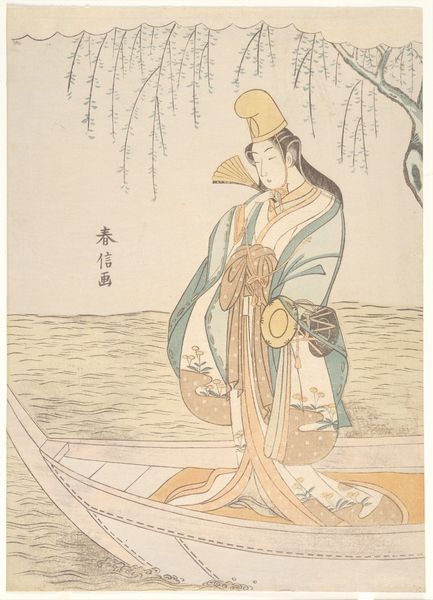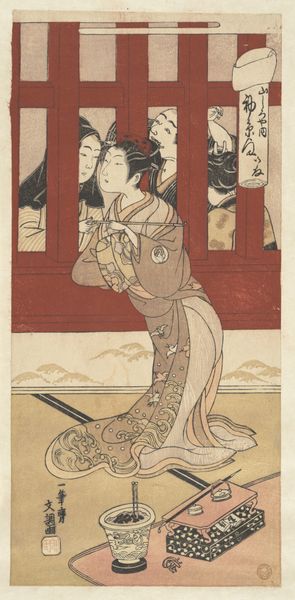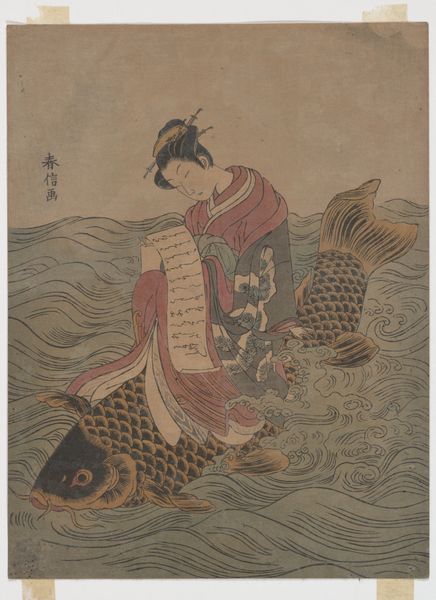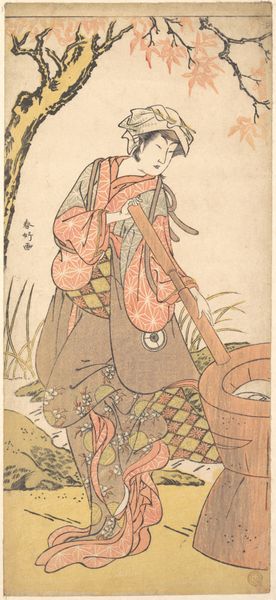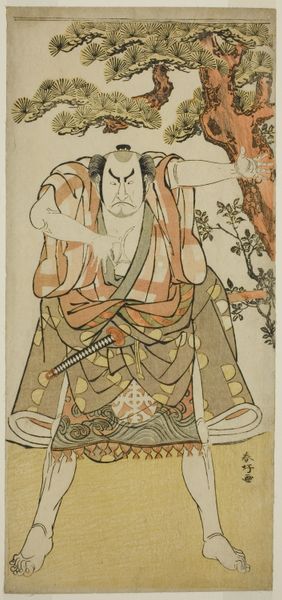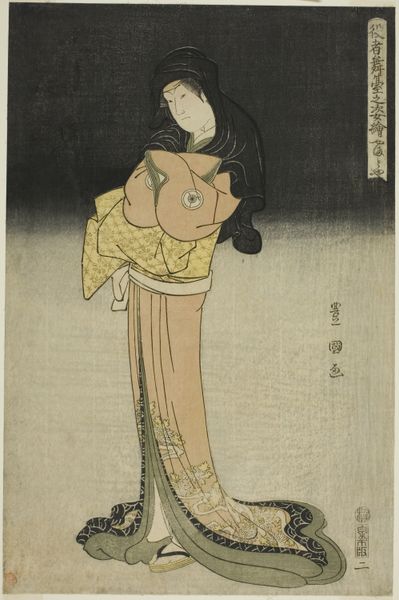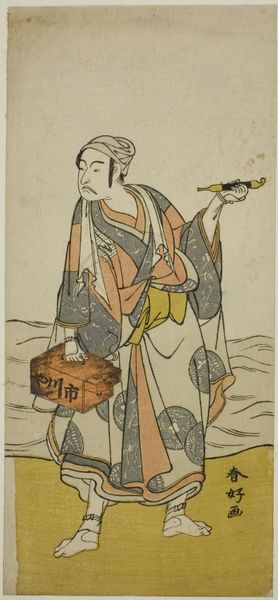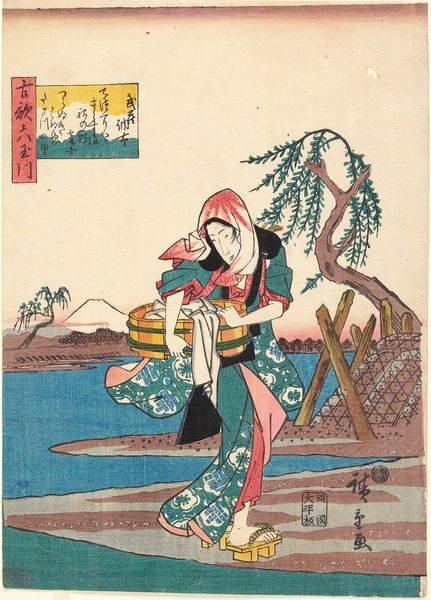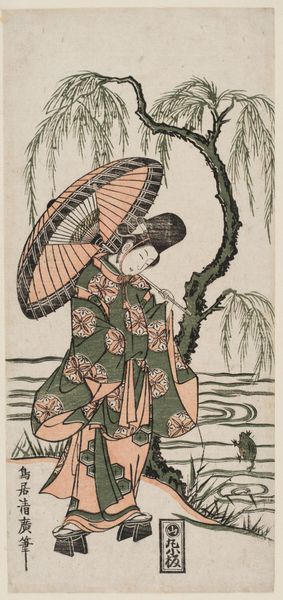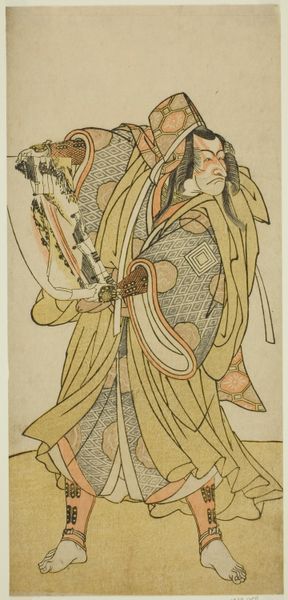
Shirabyoshi Dancer standing in Asazuma Boat c. 1769 - 1770
0:00
0:00
print, paper
#
toned paper
# print
#
asian-art
#
japan
#
paper
#
handmade artwork painting
#
fluid art
#
linocut print
#
coloured pencil
#
coffee painting
#
watercolour bleed
#
watercolour illustration
#
watercolor
#
warm toned green
Dimensions: 10 × 7 5/16 in.
Copyright: Public Domain
Curator: There’s a melancholy grace to Suzuki Harunobu’s print from around 1769-1770, "Shirabyoshi Dancer Standing in Asazuma Boat,” now residing at the Art Institute of Chicago. It captures a moment suspended in time. Editor: My first thought is that it's muted, a kind of soft sadness washes over it. Is it the palette, or the downward gaze of the figure that gives this impression? Also the print’s size intrigues me. Curator: Harunobu’s genius, I feel, lies in precisely that – creating intimacy. These small, full-color prints, known as *nishiki-e,* were revolutionary, weren’t they? Transforming the ukiyo-e world with their intricate techniques. Think about the labor involved in carving separate woodblocks for each color! Editor: Exactly. The nishiki-e technique speaks to a whole system of labor and access. Color becomes a signifier not just of artistry but of economy and social change, wouldn't you agree? A reflection of a more affluent merchant class who could actually afford such luxury items. It's a handmade artwork for an emerging market! Curator: Ah, but the beauty is, it also feels so profoundly human! Look at her robes, falling just so. She carries her small drum and fan. Editor: The fabric's pattern and its relationship to the shape it covers reveals how carefully material conditions are considered by the artist: social expectations in regards to clothing and adornment are visually intertwined with artistic choices about process. Even the toned paper serves its role as both art material and signifier. Curator: In this moment of stillness, afloat on the water, does she ponder fame or loss? A performer at a crossroads, perhaps? This delicate work really offers itself as a meditation. Editor: Indeed. I've learned from exploring Harunobu's craft how deeply connected the means of production are to broader social changes. I am drawn to the handmade and how, as you said, it represents these human moments. Curator: Such a great way to bring new light to the artist’s considerations when viewing Harunobu’s artworks. Editor: It also made me ponder our experience in a totally different light, which is how things like access and consumerism of artwork affect both subject and artist.
Comments
No comments
Be the first to comment and join the conversation on the ultimate creative platform.
